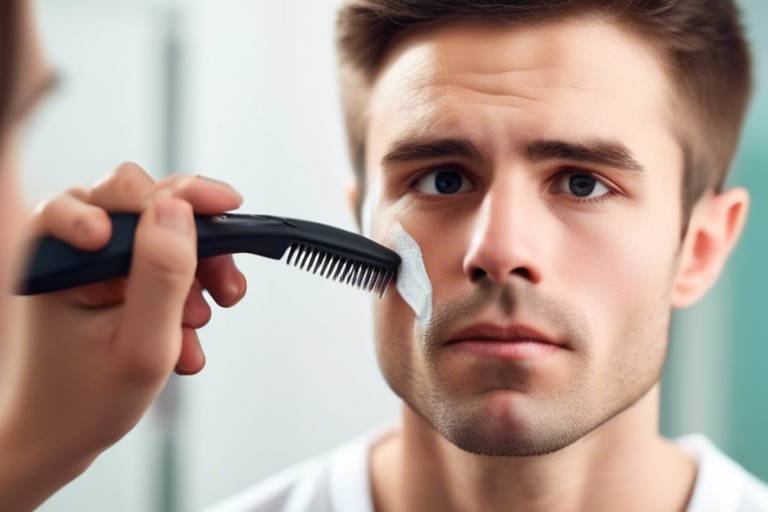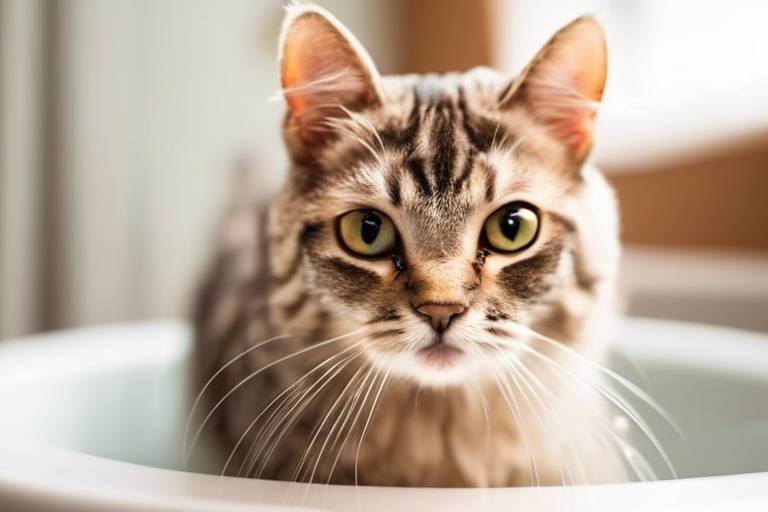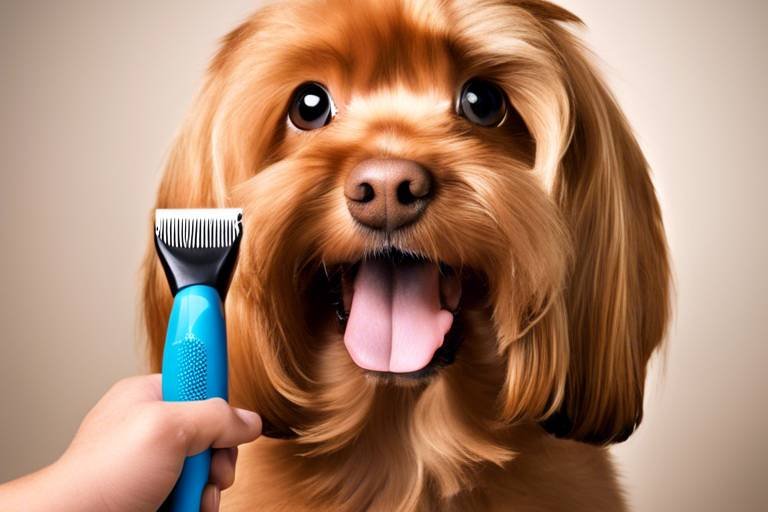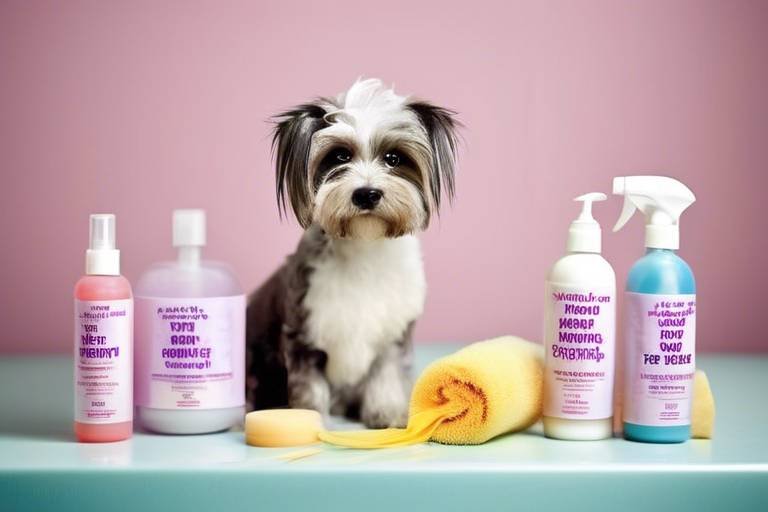The Role of Grooming in Managing Pet Allergies
Managing pet allergies can feel like a never-ending battle for many pet owners, but did you know that one of the most effective weapons in your arsenal is proper grooming? That's right! Regular grooming not only keeps your furry friend looking their best but also plays a crucial role in reducing allergens that can trigger uncomfortable reactions in sensitive individuals. Imagine your home as a sanctuary, free from the sneezes and sniffles that often accompany pet ownership. With the right grooming techniques, you can create a more comfortable environment for everyone in your household.
So, how does grooming help? Well, every pet, whether it's a fluffy dog or a sleek cat, sheds fur and skin cells, which are the primary culprits behind pet allergies. When these allergens accumulate in your home, they can become airborne, leading to sneezing, itching, and other allergy symptoms. By incorporating regular grooming into your pet care routine, you can significantly reduce the amount of dander and fur that ends up in your living space. Think of grooming as a shield against allergens – the more you groom, the less you have to worry about those pesky triggers!
But grooming isn't just about brushing and bathing; it's a comprehensive approach that includes various techniques and tools designed to tackle allergens effectively. For instance, using specific brushes can help remove loose fur and dander before they have a chance to settle in your home. Additionally, regular baths can wash away dirt and allergens, keeping your pet's coat clean and healthy. It's like giving your pet a spa day that also benefits your home!
In this article, we will dive deeper into the essential grooming practices that can help manage pet allergies. From understanding the best grooming tools to incorporating dietary changes, we’ll cover everything you need to know to keep your pet and your home allergy-friendly. So, grab your grooming tools and let’s get started on this journey to a healthier, happier living space!
Regular grooming is essential for maintaining a pet's hygiene and health. It helps reduce shedding and dander, which are significant contributors to pet allergies in sensitive individuals. When you groom your pet on a consistent basis, you not only keep their coat looking fabulous but also minimize the amount of allergens that can trigger reactions in allergy sufferers.
Using the right grooming tools can make a significant difference in managing allergens. This section covers various tools available for different pet types and their specific benefits for allergy management. From brushes and combs to de-shedding tools, having the right equipment can enhance your grooming routine and ensure that you are effectively reducing allergens in your home.
Selecting the appropriate brushes and combs can effectively remove loose fur and dander. Understanding the different types of brushes can help pet owners choose the best option for their pets. For example, slicker brushes are fantastic for long-haired breeds, while de-shedding tools are perfect for short-haired pets that tend to shed more.
Slicker brushes are excellent for removing mats and tangles while capturing loose fur. They are particularly effective for long-haired breeds prone to excessive shedding. By using a slicker brush regularly, you can keep your pet's coat healthy and minimize the amount of fur that ends up in your home.
De-shedding tools help reduce the amount of fur that ends up in your home. These tools are designed to reach the undercoat and remove dead hair efficiently. Incorporating de-shedding tools into your grooming routine can significantly cut down on allergens, making it a worthwhile investment.
Regular baths can significantly reduce allergens by washing away dander and dirt. This section discusses the best bathing practices and frequency to keep pets clean and allergy-friendly. It's crucial to use pet-safe shampoos that are gentle on their skin while effectively removing allergens.
Beyond brushing and bathing, other grooming practices can help manage allergies. This section highlights nail trimming, ear cleaning, and dental care as essential components of a complete grooming routine. Each of these practices contributes to your pet's overall health and can indirectly affect allergen levels in your home.
Keeping nails trimmed not only promotes pet health but also prevents allergens from accumulating in the home. Regular nail care is an often-overlooked aspect of grooming. When nails are kept short, there's less chance of dirt and dander being trapped in the fur around the paws.
Cleaning a pet's ears can help prevent infections and reduce the buildup of allergens. This section provides tips on how to safely clean your pet's ears at home, ensuring that they remain healthy and comfortable.
A pet's diet can impact their skin health and allergen production. This section discusses how a balanced diet contributes to healthier skin and fur, reducing allergic reactions. Feeding your pet high-quality food can make a significant difference in their overall health and, by extension, the amount of dander they produce.
Hypoallergenic pet foods are designed to minimize allergic reactions. This section explores the benefits of these diets and how they can complement grooming practices for allergy management. Choosing the right food can help improve your pet's skin condition, further reducing allergens in your home.
Certain supplements can improve skin condition and reduce dander production. This section highlights popular supplements that pet owners can consider to support their pets' overall health. By integrating these supplements into your pet's diet, you can enhance the effects of grooming and create a more allergy-friendly environment.
- How often should I groom my pet? Regular grooming should be done at least once a week, but this can vary based on your pet's breed and coat type.
- Can grooming completely eliminate pet allergies? While grooming can significantly reduce allergens, it may not completely eliminate them. It's best to combine grooming with other allergy management strategies.
- What are the best hypoallergenic foods for pets? Look for foods that contain limited ingredients and avoid common allergens like grains and certain proteins.
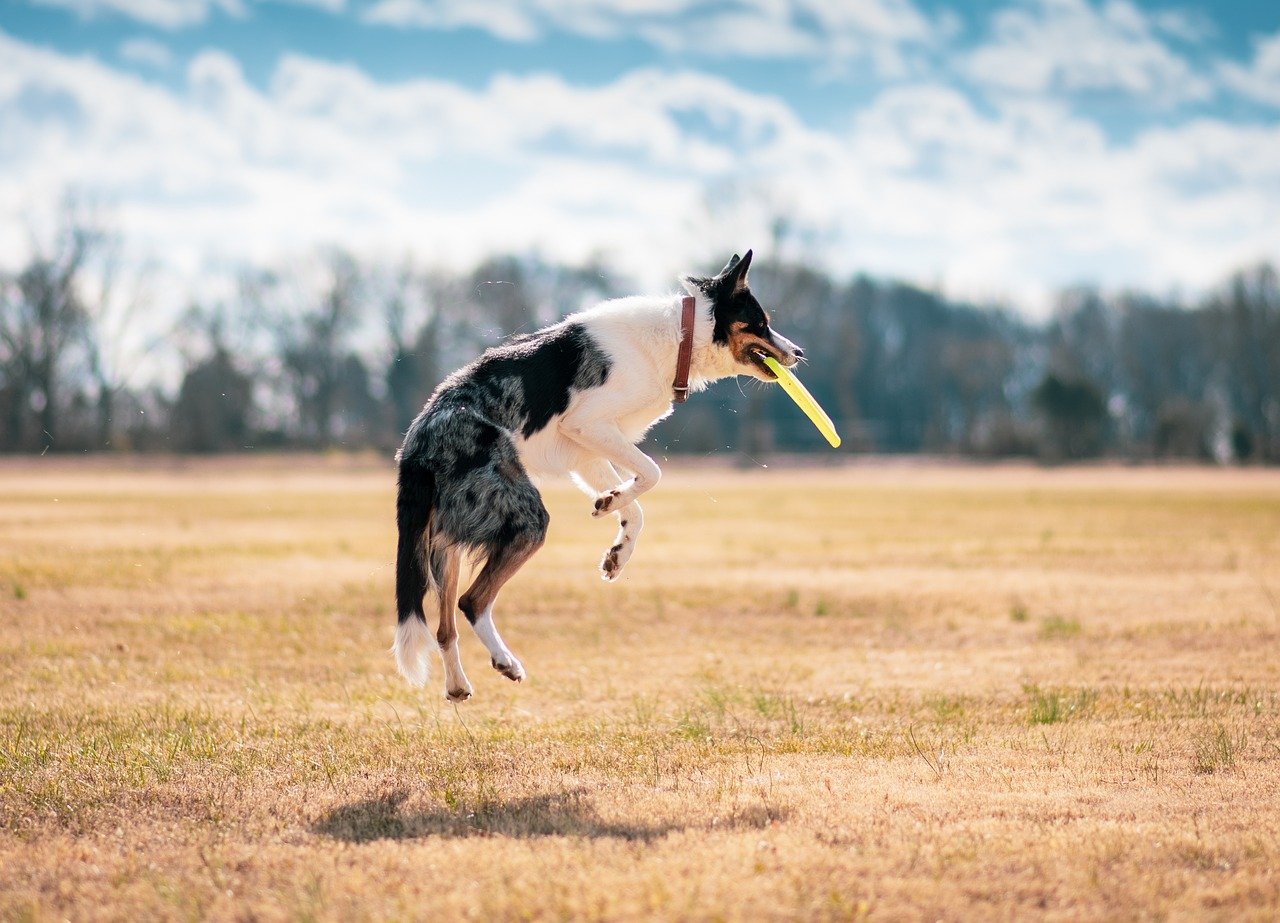
The Importance of Regular Grooming
When it comes to our furry friends, regular grooming is not just a luxury; it's a necessity! Think of grooming as a vital part of a pet's health regimen, much like regular check-ups at the vet. Just as we humans feel fresh and clean after a shower, our pets also benefit immensely from the routine. Regular grooming plays a crucial role in maintaining a pet's hygiene and overall well-being.
One of the most significant advantages of grooming is its ability to reduce shedding and dander. For those who suffer from pet allergies, these two factors are often the primary culprits behind allergic reactions. By keeping your pet well-groomed, you can significantly minimize the amount of loose fur and dander that accumulates in your home. Imagine trying to breathe in a room filled with dust; that’s what it feels like for someone with allergies when pet hair and dander are present. Regular brushing can help keep that dust at bay!
Additionally, grooming helps to identify any potential health issues early on. While brushing your pet, you may notice unusual lumps, bumps, or skin irritations that might otherwise go unnoticed. This proactive approach can lead to early intervention and treatment, ensuring your pet stays happy and healthy. Just like how we check our skin for any unusual changes, grooming is an opportunity to give your pet a thorough once-over.
Moreover, grooming can be a fantastic bonding experience between you and your pet. Taking the time to groom your pet not only keeps them looking fabulous but also strengthens your relationship. Imagine the joy of seeing your dog wag their tail excitedly as you brush them! It’s a delightful way to show affection and care.
In summary, regular grooming is essential for:
- Maintaining hygiene and health
- Reducing shedding and dander
- Identifying health issues early
- Strengthening the bond between pet and owner
So, whether you have a fluffy cat, a playful dog, or any other type of pet, make grooming a regular part of your routine. Not only will it help manage allergens, but it will also keep your pet looking and feeling their best!

When it comes to managing pet allergies, the right grooming tools can be a game changer. Just imagine having a toolkit specifically designed to tackle the allergens that make you sneeze and wheeze! Using the appropriate grooming tools not only helps to keep your furry friend looking fabulous but also plays a crucial role in reducing the allergens that can linger in your home. Think of grooming as a shield against those pesky allergens, and your tools are the weapons in your arsenal. In this section, we’ll dive into the various grooming tools available for different pet types and how each can contribute to a healthier, allergen-free environment.
First up, let's talk about brushes and combs. Selecting the right brushes and combs is essential for effectively removing loose fur and dander. Different types of brushes serve different purposes, and knowing which one to choose can make all the difference. For instance, if you have a long-haired breed, a slicker brush might be your best friend. These brushes are designed to tackle mats and tangles while capturing loose fur, making them particularly effective for breeds that shed a lot.
In addition to slicker brushes, there are de-shedding tools that are specifically designed to reduce the amount of fur that ends up in your home. These tools can reach down to the undercoat and efficiently remove dead hair, which can significantly decrease the dander and allergens floating around. It's like having a mini vacuum cleaner for your pet's coat!
| Tool Type | Best For | Benefits |
|---|---|---|
| Slicker Brush | Long-haired breeds | Removes mats and tangles; captures loose fur |
| De-shedding Tool | All breeds | Reduces shedding; minimizes allergens |
| Pin Brush | Medium to long-haired breeds | Detangles and smooths the coat |
Now, let’s not forget about the importance of bathing techniques. Regular baths can be a lifesaver when it comes to reducing allergens. By washing away dander and dirt, you create a cleaner environment for both you and your pet. However, it’s important to choose the right shampoos and establish a bathing routine that works for your pet's specific needs. Some pets may require more frequent baths, while others may be perfectly fine with a monthly wash.
Beyond brushing and bathing, there are additional grooming practices that can help manage allergies. Nail trimming, ear cleaning, and dental care are often overlooked but are essential components of a complete grooming routine. For instance, keeping your pet's nails trimmed not only promotes their health but also prevents allergens from accumulating in your home. Similarly, cleaning your pet's ears can help prevent infections and reduce the buildup of allergens.
In summary, having the right grooming tools is crucial for managing pet allergies effectively. By investing in quality brushes, combs, and bathing supplies, you can significantly reduce the allergens that contribute to allergy symptoms in sensitive individuals. Remember, grooming is not just about aesthetics; it's about creating a healthier living environment for you and your furry companions!
- How often should I groom my pet? - It depends on the breed and coat type, but regular grooming every few weeks is generally recommended.
- Can grooming really help with allergies? - Yes! Regular grooming can significantly reduce shedding and dander, which are common allergens.
- What if my pet doesn't like being groomed? - Start slowly and make it a positive experience with treats and praise. Consider consulting a professional groomer if needed.
When it comes to grooming your furry friends, choosing the right brushes and combs is crucial for not only maintaining their appearance but also for managing allergens effectively. Different pets have different types of fur, and using the appropriate tools can make a world of difference in reducing shedding and dander. Imagine trying to clean up a mess with the wrong tools—frustrating, right? The same goes for grooming!
Let’s dive into the various types of brushes and combs available, so you can find the perfect match for your pet. For instance, slicker brushes are a popular choice for many pet owners. These brushes have fine, short wires close together, which are fantastic for removing mats and tangles while capturing loose fur. If your pet has long hair, you’ll definitely want to have one of these in your grooming arsenal. They’re like magic wands for untangling a mess!
Another tool that can be a game-changer is the de-shedding tool. These specialized tools are designed to reach your pet's undercoat, effectively removing dead hair and minimizing the amount of fur that ends up on your floors and furniture. It's almost like giving your pet a spa day while simultaneously keeping your home cleaner. Regular use of de-shedding tools can significantly reduce the amount of dander and fur that triggers allergies, making it a win-win situation.
To help you understand which brushes and combs might be best suited for your pet, here’s a quick comparison table:
| Tool Type | Best For | Benefits |
|---|---|---|
| Slicker Brush | Long-haired breeds | Removes mats, tangles, and loose fur |
| De-shedding Tool | Double-coated breeds | Removes dead hair from the undercoat |
| Pin Brush | Medium to long-haired pets | Detangles and smooths fur |
| Bristle Brush | Short-haired breeds | Removes loose fur and distributes natural oils |
In summary, the right grooming tools can be incredibly effective in managing pet allergies. By investing in quality brushes and combs tailored to your pet's specific needs, you can create a grooming routine that not only enhances their coat but also helps keep your home allergen-free. So, next time you think about grooming, remember that it’s not just about aesthetics; it’s about creating a healthier environment for both you and your beloved pet!
- How often should I groom my pet? It depends on the breed, but generally, brushing once a week is a good rule of thumb for most pets.
- Can grooming really help with allergies? Yes! Regular grooming helps reduce shedding and dander, which are common allergens.
- What if my pet hates being brushed? Start slowly and make it a positive experience with treats and praise. Gradually increase the grooming time.
Slicker brushes are a must-have in any pet owner's grooming toolkit, especially for those with long-haired breeds. These brushes are specifically designed to tackle the challenges posed by mats, tangles, and excessive shedding. With their fine, short wires positioned close together, slicker brushes efficiently penetrate the coat, removing loose fur and dander while also preventing the formation of mats that can lead to skin irritations.
Using a slicker brush can feel a bit like a magic wand for pet owners. Imagine effortlessly gliding through your pet's fur, watching as the brush collects all the unwanted strands and allergens. This not only helps keep your home cleaner but also contributes to your pet's overall well-being. Regular use of a slicker brush can significantly reduce the amount of dander and hair that triggers allergies in sensitive individuals. But how do you choose the right slicker brush for your furry friend?
When selecting a slicker brush, consider the following factors:
- Coat Type: Different breeds have various coat types. For example, slicker brushes with longer bristles are ideal for thick, long fur, while shorter bristles work better for shorter coats.
- Size: Ensure that the brush size is appropriate for your pet. A larger brush may be more effective for bigger dogs, while smaller brushes are better suited for cats or smaller breeds.
- Comfort: Look for brushes that have ergonomic handles for a comfortable grip, making the grooming process enjoyable for both you and your pet.
Incorporating slicker brushing into your pet's grooming routine can be a game changer. Not only does it help in managing allergens, but it also strengthens the bond between you and your pet. Imagine the joy of your pet as they enjoy a good grooming session, all while you’re taking proactive steps to keep allergies at bay!
To maximize the benefits of slicker brushing, it's essential to establish a regular grooming schedule. Depending on the breed and coat type, brushing once or twice a week may suffice, but long-haired breeds might require daily grooming to keep their coats in top condition. Always remember to be gentle, as excessive pressure can irritate your pet's skin.
| Brush Type | Best For | Benefits |
|---|---|---|
| Slicker Brush | Long-haired breeds | Removes mats, tangles, and loose fur |
| Pin Brush | Medium to long-haired breeds | Detangles while smoothing the coat |
| Bristle Brush | Short-haired breeds | Distributes natural oils for a healthy shine |
In conclusion, slicker brushes are not just tools; they are essential allies in the battle against pet allergies. By investing in a quality slicker brush and using it regularly, you can help keep your home allergen-free and ensure your pet’s coat remains healthy and beautiful.
When it comes to managing pet allergies, de-shedding tools are a game changer. These specialized grooming instruments are designed to tackle one of the biggest culprits of allergens: loose fur. Imagine this: you’re sitting on your couch, enjoying a cozy evening, when suddenly you’re engulfed in a cloud of fur as your furry friend shakes off their coat. Not only is it annoying, but it’s also a nightmare for allergy sufferers. This is where de-shedding tools come into play, helping to keep your home cleaner and more allergen-free.
De-shedding tools work by reaching deep into your pet's undercoat, effectively removing dead hair before it has a chance to float around your living space. These tools come in various forms, each with its unique benefits. For instance, some are designed specifically for short-haired breeds, while others cater to long-haired pets that tend to shed more. Using a de-shedding tool regularly can significantly reduce the amount of fur that ends up on your furniture, floors, and clothing.
One popular type of de-shedding tool is the FURminator. This tool features a stainless-steel edge that gently removes loose fur without damaging the topcoat. It's particularly effective for breeds that shed heavily, such as Golden Retrievers and Siberian Huskies. Another option is the de-shedding rake, which is great for tackling tangles and mats while removing excess fur. When choosing a de-shedding tool, consider your pet's coat type and shedding habits to find the best match.
To maximize the effectiveness of de-shedding tools, it’s essential to use them correctly. Here are a few tips:
- Brush in the direction of hair growth: This helps prevent discomfort and ensures you’re effectively removing loose fur.
- Work in sections: Divide your pet's coat into manageable sections to ensure thorough grooming.
- Be gentle: Too much pressure can irritate your pet’s skin, so be mindful of how hard you’re pressing.
Incorporating de-shedding tools into your grooming routine can lead to a noticeable reduction in allergens around your home. Not only does it keep your living space cleaner, but it also promotes a healthier coat for your furry friend. By regularly using these tools, you’re not just making life easier for yourself; you’re also contributing to your pet’s overall well-being. So, grab that de-shedding tool and let’s make shedding a thing of the past!
Q: How often should I use a de-shedding tool on my pet?
A: It depends on your pet's shedding frequency. For heavy shedders, once a week may be ideal, while lighter shedders might only need it once a month.
Q: Can I use a de-shedding tool on wet fur?
A: It's best to use de-shedding tools on dry fur to achieve the best results and avoid damaging your pet's coat.
Q: Will de-shedding tools help with allergies?
A: Yes! By reducing the amount of loose fur and dander in your home, de-shedding tools can help alleviate allergy symptoms for sensitive individuals.
When it comes to managing pet allergies, regular bathing is a crucial element that often gets overlooked. Think about it: just as we wash our clothes to remove dirt and allergens, our furry friends also need a good scrub to keep their coats clean and their skin healthy. Bathing not only helps to wash away dander and dirt but also reduces the buildup of allergens that can trigger reactions in sensitive individuals. So, how often should you bathe your pet? Well, that largely depends on their breed, coat type, and lifestyle.
For instance, dogs with long hair or those that love to roll around in the mud may need a bath every few weeks, while short-haired breeds might only require a bath every couple of months. But be careful! Over-bathing can strip your pet's skin of its natural oils, leading to dryness and irritation. A good rule of thumb is to consult with your veterinarian to determine the best bathing schedule for your specific pet.
Now, let’s dive into some best practices for bathing your pet to ensure you’re doing it right:
- Use the Right Shampoo: Always opt for a pet-specific shampoo that is gentle and hypoallergenic. Human shampoos can be too harsh for their sensitive skin.
- Brush Before Bathing: Give your pet a good brush before the bath. This helps to remove loose fur and mats, making the bathing process more effective.
- Temperature Matters: Make sure the water is lukewarm. Too hot or too cold can make your pet uncomfortable.
- Rinse Thoroughly: It’s crucial to rinse out all the shampoo to prevent skin irritation. Leftover soap can lead to itching and discomfort.
- Drying Techniques: After the bath, gently towel dry your pet. For dogs that enjoy it, you can use a blow dryer on a low setting, but keep it at a safe distance to avoid burns.
In addition to these techniques, consider incorporating a hydrating conditioner into your routine. This can help maintain your pet's coat and skin health, further reducing the potential for allergens. Remember, a well-groomed pet not only looks good but also feels good, and that’s a win-win for both of you!
Finally, bathing can also be a great opportunity for bonding. Make it a fun experience by offering treats and gentle praise throughout the process. Your pet will associate bath time with positive vibes, making future baths much easier.
Q: How often should I bathe my pet?
A: It depends on your pet's breed and lifestyle. Generally, dogs with longer hair may need baths every few weeks, while short-haired breeds can be bathed every couple of months. Consult your vet for personalized advice.
Q: Can I use human shampoo on my pet?
A: No, human shampoos can be too harsh for pets. Always use a shampoo specifically formulated for animals to avoid skin irritation.
Q: What should I do if my pet hates baths?
A: Try to make bath time enjoyable by using treats and praise. You can also consider using a handheld showerhead or a bathtub mat to make them feel more secure.
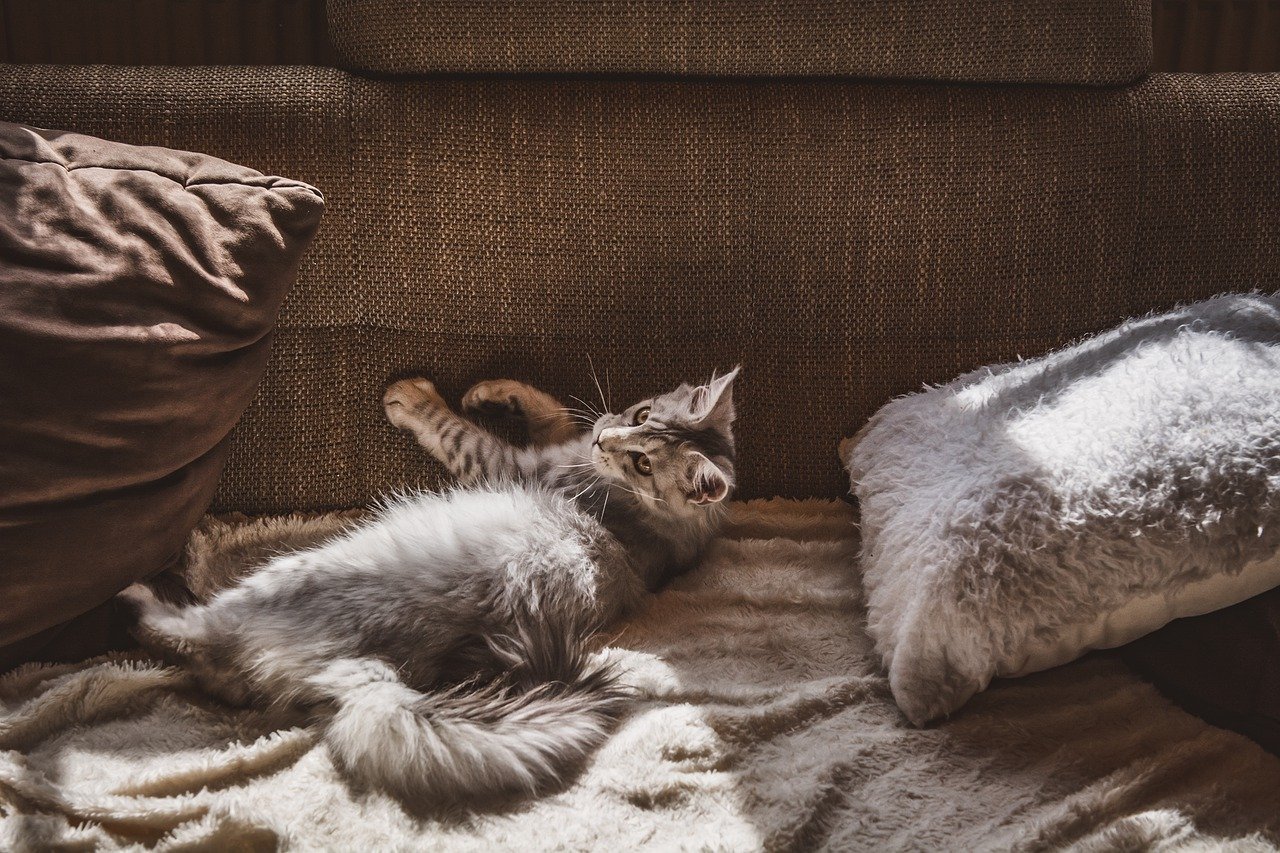
When it comes to managing pet allergies, grooming goes far beyond just brushing and bathing. There are several additional grooming practices that play a crucial role in maintaining your pet's overall health and minimizing allergens in your home. Think of grooming as a comprehensive health check-up for your furry friend. Just like we need to take care of our nails, ears, and teeth, our pets require the same attention. Ignoring these aspects can lead to a buildup of allergens, making life uncomfortable for allergy sufferers.
One often-overlooked area is nail trimming. Keeping your pet's nails trimmed is not just about aesthetics; it’s about health too! Long nails can lead to discomfort and even injury. Moreover, when pets scratch surfaces, they can inadvertently spread dander and dirt around your home. Regular nail care ensures that your pet stays comfortable and that any potential allergens are kept in check. It's recommended to trim your pet's nails every 2-4 weeks, depending on their activity level and growth rate. If you're unsure how to do it, don't hesitate to consult a professional groomer or your veterinarian.
Another essential practice is ear cleaning. Just like humans, pets can develop wax buildup and dirt in their ears, which can lead to infections and further allergen accumulation. Regularly cleaning your pet's ears not only helps prevent these issues but also reduces the number of allergens lurking around. To clean your pet's ears safely, use a vet-recommended ear cleaner and a cotton ball. Gently wipe the outer ear, being careful not to insert anything into the ear canal. It’s a quick process that can be done during your regular grooming sessions, and it makes a world of difference in keeping your pet healthy.
Finally, let’s not forget about dental care. Poor dental hygiene can lead to bad breath, gum disease, and even systemic health problems. While it might not seem directly related to allergies, a healthy mouth contributes to overall wellness, which can indirectly affect your pet's skin and coat. Regular brushing of your pet’s teeth, along with dental chews, can help keep their mouth clean and reduce the risk of allergens associated with dental issues. Aim for at least two to three times a week for optimal results.
In summary, maintaining a complete grooming routine that includes nail trimming, ear cleaning, and dental care is vital for managing pet allergies effectively. These practices not only contribute to your pet's health but also create a cleaner living environment for everyone. Remember, a happy pet means a happy home, and with the right grooming techniques, you can minimize allergens and keep your furry friend looking and feeling their best!
- How often should I groom my pet? Regular grooming should be done at least once a week, but some pets may require more frequent grooming based on their coat type and shedding levels.
- What tools do I need for grooming? Basic grooming tools include brushes, combs, nail clippers, and ear cleaning solutions. Specific tools may vary based on your pet's breed and coat type.
- Can grooming help with my pet's allergies? Yes! Regular grooming helps reduce dander and loose fur, which are common allergens. It also promotes a healthier coat and skin.
- Is it safe to clean my pet's ears at home? Yes, as long as you use vet-recommended products and follow proper techniques. If you're unsure, consult your veterinarian.
Nail trimming is often an overlooked yet crucial part of pet grooming that can significantly impact not just your pet's health but also the hygiene of your home. Imagine your furry friend running around with long, unkempt nails; not only can it lead to discomfort for them, but it can also contribute to the accumulation of allergens in your living space. Regular nail trimming helps prevent the buildup of dirt and dander that can cling to those nails, thereby reducing the chances of allergic reactions for sensitive individuals.
But why is nail trimming so important? Well, long nails can lead to various issues, including painful breaks, infections, and even changes in the way your pet walks. This change in gait can lead to joint problems over time. Therefore, keeping your pet's nails trimmed is not just a cosmetic issue; it's a matter of overall health. By ensuring that your pet's nails are at an appropriate length, you also minimize the risk of allergens being tracked throughout your home.
So, how often should you trim your pet's nails? It largely depends on their activity level and the surfaces they walk on. For instance, dogs that spend a lot of time on hard surfaces may naturally wear down their nails, while indoor cats might require more frequent trims. Generally, a good rule of thumb is to check your pet's nails every couple of weeks. If you hear clicking sounds when they walk, it’s time for a trim!
Here are some tips for effective nail trimming:
- Use the right tools: Invest in high-quality nail clippers designed for your pet's size. For larger dogs, a guillotine-style clipper might work best, while smaller pets may benefit from scissor-type clippers.
- Know where to cut: Be cautious of the "quick," which is a blood vessel inside the nail. Cutting into this area can cause pain and bleeding. If your pet has light-colored nails, you can easily see the quick as a pinkish area. For dark nails, trim just a little at a time.
- Make it a positive experience: Use treats and praise to make nail trimming a stress-free experience for your pet. This will help them associate nail trimming with something positive instead of a chore.
In summary, nail trimming is a vital part of your pet's grooming routine that not only contributes to their comfort and health but also plays a significant role in managing allergens in your home. By keeping their nails short, you can help ensure a cleaner, healthier environment for both your pet and your family.
Q: How often should I trim my pet's nails?
A: Generally, every 2-4 weeks is a good rule of thumb, but it can vary based on your pet's activity level.
Q: What should I do if I accidentally cut the quick?
A: Stay calm! Apply a styptic powder to stop the bleeding and soothe your pet. If bleeding doesn't stop, consult your veterinarian.
Q: Can I use human nail clippers for my pet?
A: It's not recommended. Pet-specific nail clippers are designed to make the process safer and easier.
Cleaning your pet's ears is an essential yet often overlooked aspect of grooming that can significantly contribute to managing allergens in your home. Just like we clean our ears to prevent wax buildup and infections, our furry friends also require regular ear care to maintain their health and comfort. A clean ear not only helps in preventing infections but also reduces the accumulation of dirt and allergens that can trigger allergic reactions in sensitive individuals.
When it comes to ear cleaning, it’s crucial to approach the task with care. Start by gathering the necessary supplies, which typically include a gentle ear cleaner, cotton balls or pads, and possibly some treats to reward your pet for their cooperation. It's important to choose an ear cleaner that is specifically formulated for pets, as human products can be too harsh and may irritate their sensitive skin.
To clean your pet's ears effectively, follow these simple steps:
- Find a Comfortable Space: Choose a quiet area where your pet feels safe and comfortable. This will help them relax during the cleaning process.
- Apply the Cleaner: Gently lift your pet's ear flap and apply the ear cleaner into the ear canal. Be careful not to insert the applicator too deeply.
- Massage the Base: After applying the cleaner, gently massage the base of the ear for about 20-30 seconds. This helps to loosen any wax or debris.
- Wipe Away Debris: Use a cotton ball or pad to wipe away any excess cleaner and debris from the ear canal. Avoid using cotton swabs, as they can push dirt further into the ear.
- Reward Your Pet: After the cleaning session, give your pet a treat and some praise. This positive reinforcement makes future cleanings easier.
It's advisable to check your pet's ears weekly, especially if they have long or floppy ears, which can trap moisture and dirt more easily. Signs that your pet may need an ear cleaning include a foul odor, excessive scratching at the ears, or visible dirt and wax buildup. If you notice any redness, swelling, or discharge, it’s best to consult your veterinarian, as these could be signs of an infection.
Regular ear cleaning not only contributes to your pet's overall health but also helps in reducing allergens that can linger in your home. By keeping your pet's ears clean, you are taking an important step in creating a healthier environment for both you and your furry friend.
Q: How often should I clean my pet's ears?
A: It's generally recommended to clean your pet's ears once a month, but if they have a history of ear infections or allergies, you may need to do it more frequently.
Q: Can I use human ear cleaners on my pet?
A: No, you should avoid using human ear cleaners as they can be too harsh for pets. Always opt for a product specifically designed for animals.
Q: What should I do if my pet resists ear cleaning?
A: If your pet is anxious about ear cleaning, try to make the experience as positive as possible by using treats and praise. You can also consider having a professional groomer or veterinarian perform the cleaning if necessary.
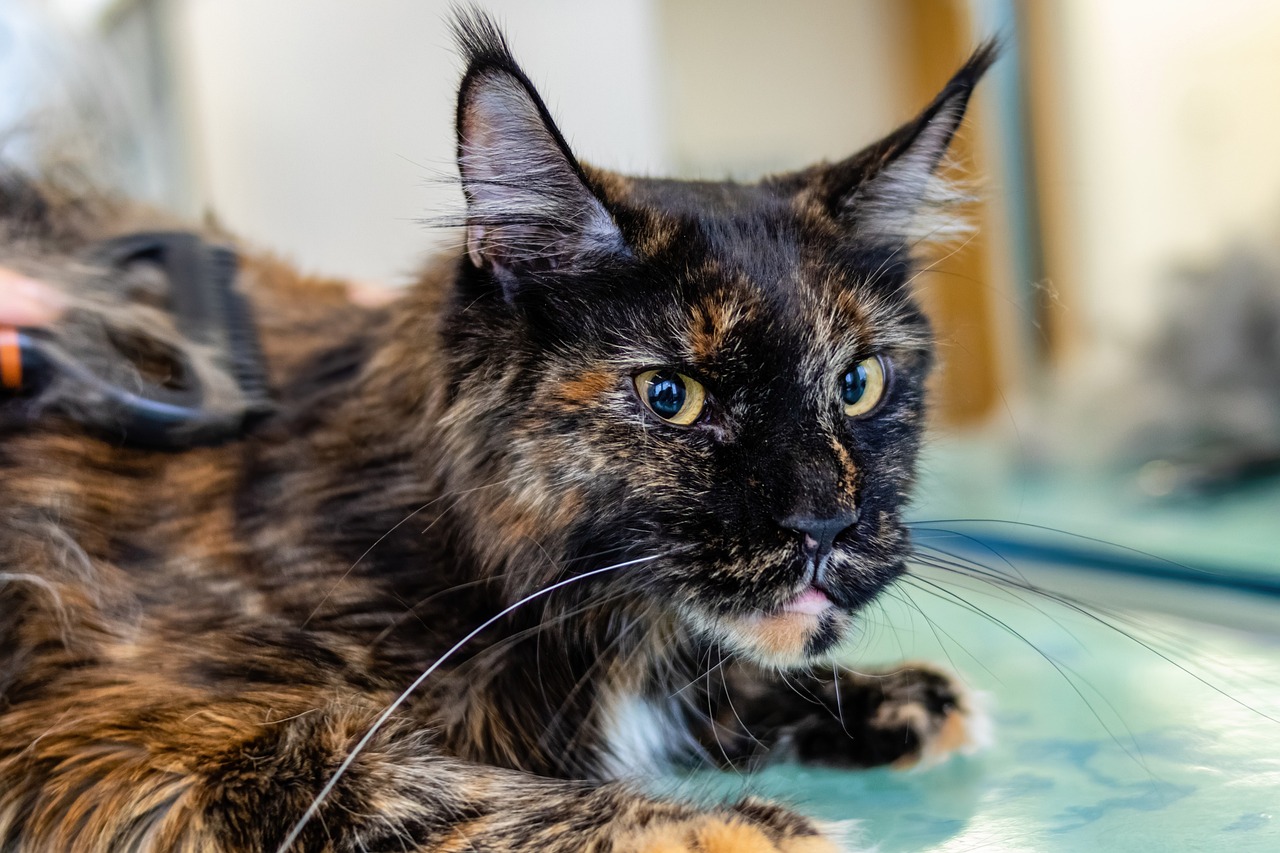
When it comes to managing pet allergies, many pet owners often focus solely on grooming techniques, but diet plays a crucial role that shouldn't be overlooked. Just like humans, pets can have sensitivities and allergies that manifest through their skin and fur. A well-balanced diet can significantly enhance your pet's overall health, leading to healthier skin and a reduction in allergen production. Think of your pet's diet as the foundation of a house; if the foundation is weak, everything built on top of it is at risk.
One of the primary ways diet impacts allergy management is through the quality of ingredients. Opting for high-quality, natural pet foods can make a world of difference. These foods are often rich in essential fatty acids, vitamins, and minerals that contribute to a shiny coat and healthy skin. Ingredients such as omega-3 and omega-6 fatty acids are particularly beneficial as they help reduce inflammation and promote skin health. When your pet’s skin is healthy, it is less likely to produce excess dander, which is a major allergen.
Another important aspect to consider is the potential for food allergies. Just like humans can have food allergies, our furry friends can also react to certain ingredients. Common allergens include beef, chicken, dairy, and grains. If you suspect that your pet may have a food allergy, it might be time to consult with your veterinarian about implementing a hypoallergenic diet. These specialized diets are formulated to minimize allergic reactions and often contain novel proteins and carbohydrates that your pet has not been exposed to before.
To give you a clearer picture, here’s a quick overview of how different dietary components can affect your pet's allergy management:
| Dietary Component | Impact on Allergies |
|---|---|
| Omega-3 Fatty Acids | Reduces inflammation and promotes healthy skin. |
| Novel Proteins | Minimizes allergic reactions in sensitive pets. |
| High-Quality Ingredients | Improves overall health and reduces allergen production. |
In addition to managing allergens through food, you might also consider adding supplements that support skin health. Supplements such as fish oil, flaxseed oil, and even certain vitamins can help maintain a healthy coat and skin, thereby reducing the likelihood of dander accumulation. It’s like giving your pet a little boost to fight off allergens; think of it as their daily superhero cape!
Remember, transitioning to a new diet should be done gradually. Abrupt changes can upset your pet's stomach, leading to further complications. Start by mixing a small amount of the new food with their current diet, gradually increasing the new food over a week or so. This method helps your pet adjust and can prevent digestive issues.
In conclusion, managing pet allergies goes beyond just grooming; a thoughtful approach to your pet's diet is equally essential. By focusing on high-quality ingredients, considering hypoallergenic options, and possibly incorporating beneficial supplements, you can create a holistic strategy that minimizes allergens and promotes overall health. Your pet will thank you with a wagging tail and a happy demeanor!
- What are the signs of pet food allergies? Look for symptoms like itching, excessive scratching, or gastrointestinal issues.
- Can I feed my pet human food? Some human foods are safe, but always check with your vet before introducing new items.
- How long does it take to see improvements with a new diet? It may take several weeks to notice significant changes in your pet’s skin and coat health.
When it comes to managing pet allergies, the choice of food can be just as crucial as grooming practices. Hypoallergenic pet foods are specially formulated to minimize allergic reactions, making them a great option for pets that are sensitive to common ingredients found in standard pet diets. These foods typically contain limited ingredients, which helps in reducing the chances of triggering allergies. But what exactly makes a food hypoallergenic? Let's dive into the details!
In general, hypoallergenic pet foods are made with novel protein sources that your pet may not have been exposed to before. This means that instead of the usual chicken or beef, you might find ingredients like duck, venison, or even fish. This change can significantly lower the risk of an allergic reaction, as your pet's immune system is less likely to recognize these proteins as threats. Additionally, many hypoallergenic diets are grain-free, which also helps in reducing allergy symptoms for some pets.
It's important to note that while hypoallergenic pet foods can be beneficial, not all pets will respond positively to them. Some pets might still have sensitivities to certain ingredients, even in hypoallergenic formulations. Therefore, it's always a good idea to consult with your veterinarian before making any significant changes to your pet's diet. They can help you choose the right food that aligns with your pet's specific needs.
Here are some common benefits of hypoallergenic pet foods:
- Reduced Allergen Exposure: By using limited ingredients, these foods help reduce exposure to allergens.
- Better Skin Health: Many hypoallergenic diets contain omega fatty acids that promote healthy skin and coat.
- Improved Digestion: Limited ingredients can aid in better digestion, especially for pets with sensitive stomachs.
To give you a clearer picture, here's a quick comparison of common ingredients found in traditional versus hypoallergenic pet foods:
| Traditional Pet Food Ingredients | Hypoallergenic Pet Food Ingredients |
|---|---|
| Chicken | Duck |
| Beef | Venison |
| Wheat | Sweet Potatoes |
| Corn | Peas |
In conclusion, incorporating hypoallergenic pet foods into your pet's diet can be a game-changer in managing allergies. It complements grooming practices by addressing the internal factors that contribute to allergen production. However, remember that each pet is unique, and what works for one might not work for another. Always keep an eye on your pet's health and consult your vet to find the best dietary solution for their specific needs.
Q: How do I know if my pet has food allergies?
A: Symptoms of food allergies can include itching, skin irritations, gastrointestinal issues, and excessive licking. If you suspect your pet has food allergies, consult your veterinarian for proper testing.
Q: Can I switch my pet to hypoallergenic food immediately?
A: It's best to transition your pet gradually to avoid digestive upset. Start by mixing a small amount of the new food with their current food and slowly increase the ratio over several days.
Q: Are hypoallergenic foods suitable for all pets?
A: While hypoallergenic foods can benefit many pets, they are not a one-size-fits-all solution. Consult your veterinarian to determine the best dietary choices for your pet's specific health needs.
When it comes to managing pet allergies, supplements for skin health can play a pivotal role. Just like humans, pets can benefit from a balanced diet supplemented with essential nutrients that promote healthy skin and a shiny coat. These supplements can help reduce dander production, which is a major trigger for allergies in sensitive individuals. Imagine your pet's skin as a protective barrier; if it’s healthy, it can keep allergens at bay. But if it’s dry or flaky, it may release more allergens into your home.
Some of the most popular supplements for skin health include Omega-3 fatty acids, biotin, and zinc. Omega-3s, for instance, are known for their anti-inflammatory properties, which can help soothe irritated skin and reduce shedding. Biotin is a vitamin that supports hair growth and skin health, while zinc plays a crucial role in maintaining a strong immune system and healthy skin. Incorporating these into your pet's diet can be as simple as adding a few drops of fish oil to their food or choosing a high-quality pet food that already includes these beneficial ingredients.
It's important to remember that not all supplements are created equal. When selecting products, look for those that are specifically formulated for pets. Reading the labels is essential; you want to ensure that the supplement contains high-quality ingredients and is free from harmful additives. Consulting your veterinarian before starting any new supplement regimen is also a wise move. They can provide tailored recommendations based on your pet’s specific needs and health conditions.
To give you a better understanding of how these supplements can benefit your furry friend, here’s a quick comparison of some popular options:
| Supplement | Benefits | Form |
|---|---|---|
| Omega-3 Fatty Acids | Reduces inflammation, improves skin health, and promotes a shiny coat | Liquid, capsules, or included in pet food |
| Biotin | Supports hair growth and skin health | Tablets or treats |
| Zinc | Strengthens immune function and promotes skin healing | Tablets or powder |
Incorporating these supplements into your pet's routine can not only help in managing allergies but also enhance their overall health and happiness. Just like we take vitamins to feel our best, our pets can benefit from a little extra love in the form of nutrition. So, why not give your furry friend the gift of good health? After all, a happy pet means a happy home!
- How long does it take to see results from supplements? - Results can vary, but many pet owners report noticeable improvements in their pet's skin and coat within a few weeks of consistent supplementation.
- Can I give my pet human supplements? - It's best to avoid giving human supplements to pets unless specifically recommended by a veterinarian, as some ingredients can be harmful to animals.
- Are there any side effects? - While most supplements are safe, some pets may experience mild digestive upset. Always consult your vet to ensure the right dosage and type for your pet.
Frequently Asked Questions
- How often should I groom my pet to manage allergies?
It's recommended to groom your pet at least once a week, but this can vary depending on the breed and coat type. Regular grooming helps reduce shedding and dander, which are major contributors to pet allergies. For pets that shed more, you might want to groom them more frequently, even a few times a week.
- What grooming tools are best for reducing allergens?
The best grooming tools for reducing allergens include slicker brushes and de-shedding tools. Slicker brushes are great for long-haired breeds, as they effectively remove mats and loose fur. De-shedding tools help reach the undercoat and remove dead hair, significantly lowering the amount of fur in your home.
- Can bathing my pet help with allergies?
Absolutely! Regular baths can wash away dander and dirt, significantly reducing allergens. It's best to bathe your pet every 4-6 weeks using a gentle, hypoallergenic shampoo. However, be careful not to over-bathe, as this can dry out their skin and lead to more dander production.
- Is it necessary to clean my pet's ears and trim their nails?
Yes, both ear cleaning and nail trimming are essential parts of grooming that can help manage allergies. Cleaning your pet's ears prevents infections and reduces allergen buildup, while regular nail trimming helps keep your home clean by minimizing dirt and dander that can accumulate from long nails.
- What role does diet play in managing pet allergies?
A balanced diet can significantly impact your pet's skin health and allergen production. Foods that are rich in omega fatty acids promote healthy skin and fur, which can help reduce allergic reactions. Additionally, hypoallergenic pet foods can minimize the likelihood of allergic responses.
- Are there supplements that can help with my pet's allergies?
Yes, certain supplements can improve your pet's skin condition and reduce dander production. Omega-3 fatty acids, for example, are known for their anti-inflammatory properties and can help maintain healthy skin. Always consult your vet before introducing new supplements to your pet's diet.






